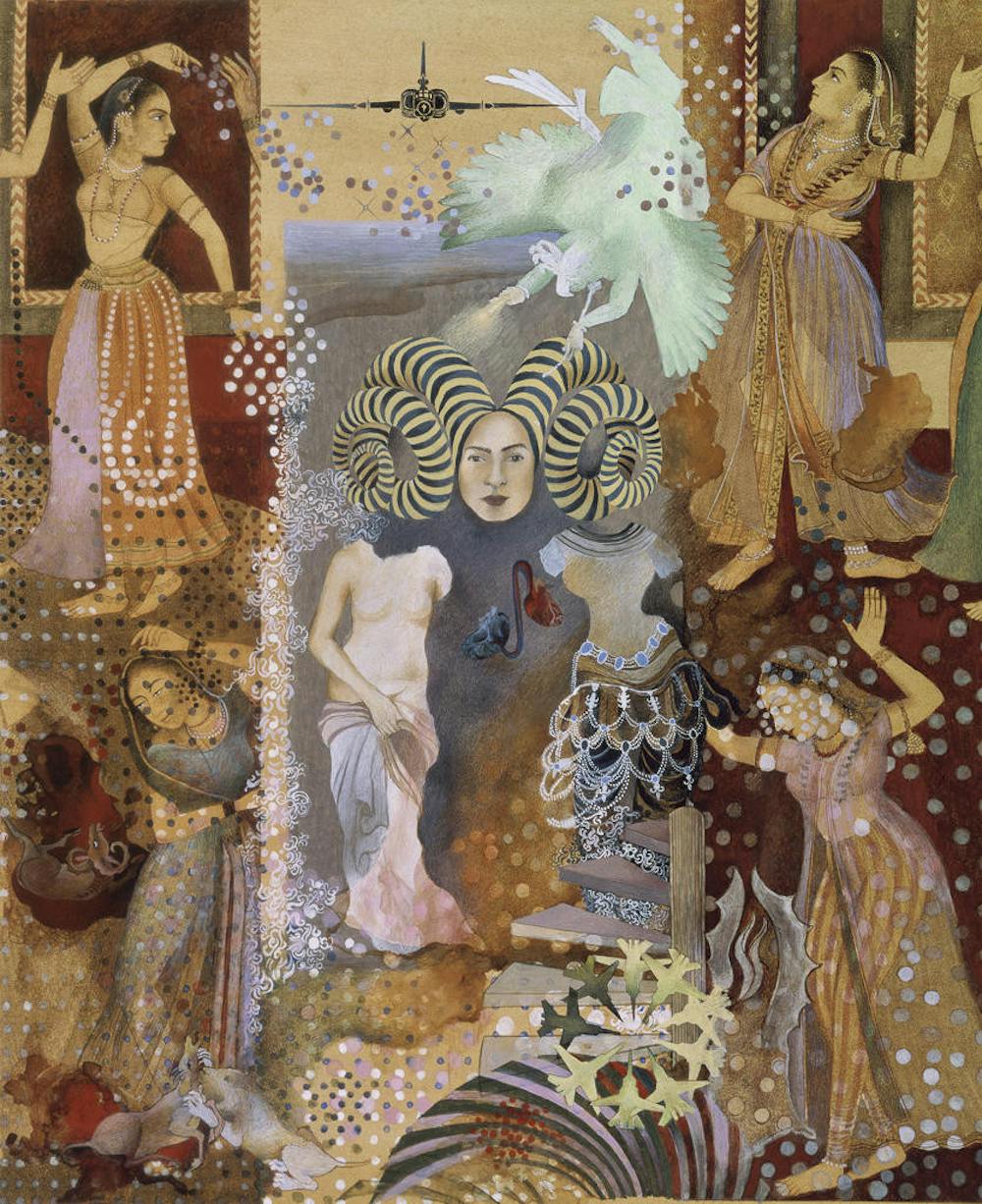The Rhode Island School of Design Museum’s latest exhibit, “Shahzia Sikander: Extraordinary Realities” showcases 60 pieces spanning the early career of Shahzia Sikander, MacArthur award winner and RISD trustee. Representing a 15-year body of work from 1988 to 2003, the show opened on Nov. 12 and will run until Jan. 30.
The RISD Museum, which organized the exhibition, planned to be the first to show the exhibit as part of its travel series. But the pandemic delayed its opening from fall 2020 until summer 2021, when it opened at the Morgan Library and Museum in Manhattan. Upon leaving Providence, the show will finish its tour at the Museum of Fine Arts in Houston.
“I wanted to understand how she got to this place in the ’90s, where the work was so complex,” said RISD Museum Exhibition Curator Jan Howard. Howard also took interest in how Sikander “(took) things from across time, across geographies, across cultures, and (brought) them together in ways that make you question.”
The exhibit examines how Sikander’s foundational works and their layering of traditional South and Central Asian manuscript painting with contemporary vocabularies influence an ever-expanding body of work.
In curating the exhibition, “we realized there were some important histories, especially her early history, of which RISD is a part, that needed to be better documented,” Howard said. “That was the impetus for framing the show around the first 15 years of her practice.”
Despite enormous success throughout a prolific career spanning three decades, “it was (still) exciting for (Sikander)” to “have access” again to earlier works, many of which have not been seen by the public, if at all, Howard said.
On her more developed works from the ’90s, Sikander told the RISD Museum, “while I was making these detailed paintings, I was also making installations that allowed me to tap into my concerns about empire, language, colonial histories, identity, sexuality and gender — interlocking themes that all of us experience.”
Studying at RISD as a Kirloskar Visiting Scholar in Painting supported Sikander’s deeper examination “into issues of feminism, sexuality and colonial power structures,” as they related to a growing feeling of “cultural dislocation” following her move to the United States, according to the Nov. 11 RISD press release. With deeper conceptual and material inquiry, Sikander took the knowledge she gained while studying at the National College of Arts in Lahore, and directed it toward expanding a visual vocabulary, Howard said.
Entering the gallery, visitors encounter Sikander’s undergraduate work from her time at the NCA, where she undertook manuscript painting. Under the mentorship of Professor Bashir Ahmad, she gained an acute “understanding of the tradition,” in which Sikander found “an (explorative) opening,” Howard said.
A painting titled “The Scroll” culminates her undergraduate studies. “Time is very much a part of ‘The Scroll.’ It’s like a day in the life or a glimpse of a lifetime,” Sikander told RISD.
The work is rigorous and “newly invented in every aspect,” Howard said. According to the RISD Museum press release, the piece challenges “the tradition’s potential for experimentation and relevance (in) contemporary art.”
Each detail excitingly engages with new frontiers of setting, scale and format. The painting “drew enormous attention,” Howard said, adding that “she was on the front page of the Frontier Post with the prime minister.” Most importantly, according to the press release, Sikander’s work expanded the possibilities of manuscript painting, which sparked a neo-miniature movement in Pakistan.
Found in Sikander’s pieces is the pervasive concern of understanding tradition, culture and identity as notions that are impure, heterogenous and unstable. Her visual resolutions resonated with several of the exhibit’s visitors.
“Her work reminds me of Thangka,” said Ziqing Su, a first-year at RISD, alluding to Tibetan paintings that depict Buddhist deities surrounded by associated gods and ancestors. Regarding the artwork “SpiNN (III),” Su, an international student from China, also liked how Sikander “uses lines to connect people, especially the red ones, which means love and marriage in my culture.”
Another RISD first-year, YiChen Li, said that the work “Epistrophe” stood out to him, particularly its unconventional use of “rolls of paper hanging down in the middle,” which reminded him of pagodas in Buddhist culture.
Reflecting a material sensitivity and responsiveness, Sikander actualizes her imagery throughout the process of making the work, maintaining a continuous, evolving understanding of what she wants to create. “Always pushing against expectations and stereotypes” is key to understanding her work, Howard said.
Sikander’s story of a young artist’s development applies to the “particular audiences” who frequent the RISD Museum, Howard added. “If we can highlight this through the work of one of our alums, it’s an exciting opportunity for us,” she said, thinking about how the RISD Museum responds to the larger RISD, Brown and Providence communities.
Along with “Shahzia Sikander: Extraordinary Realities,” the RISD Museum features additional shows, such as “Defying the Shadow” until Dec. 18, “Any distance between us” until March 13, 2022 and the “Faculty Exhibition and Forum” until Nov. 21.





